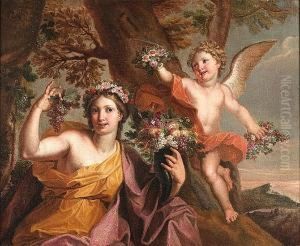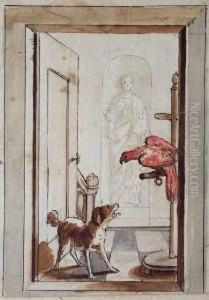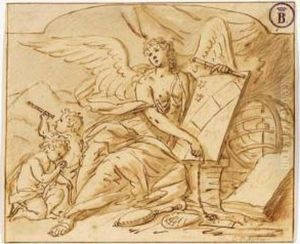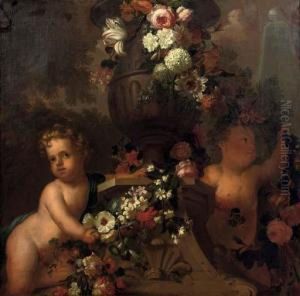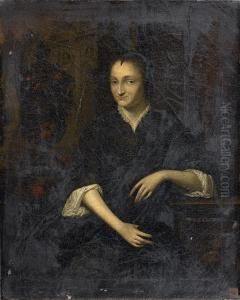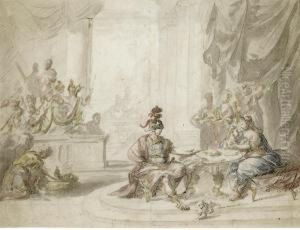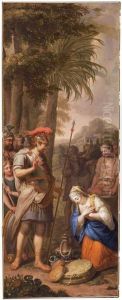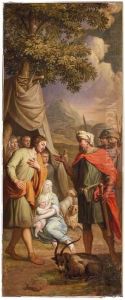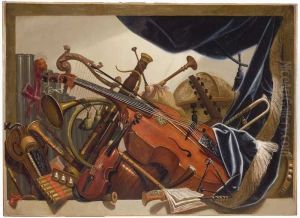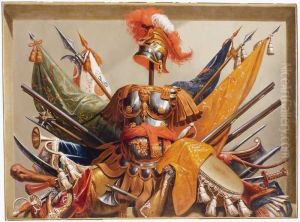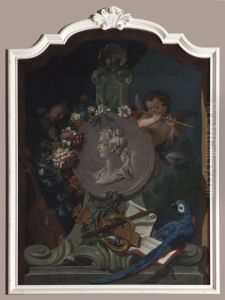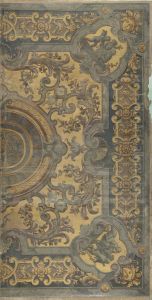Elias Van Nijmegen Paintings
Elias van Nijmegen was a Dutch painter, primarily known for his decorative and theatrical baroque style. Born in 1667 in Rotterdam, he was part of a family of artists and became one of the leading decorative painters in the Netherlands during the late 17th and early 18th centuries. His father, also named Elias van Nijmegen, was a painter as well, which suggests that Elias may have received his initial training from his father.
Van Nijmegen specialized in trompe-l'œil and grisaille paintings—techniques used to create the illusion of three-dimensional objects on a two-dimensional surface. He was particularly adept at imitating bas-relief and often painted faux marble and wood. His work adorned the walls and ceilings of various private mansions and public buildings, reflecting the opulent tastes of the Dutch Golden Age.
Throughout his career, van Nijmegen also produced altarpieces for Catholic hidden churches in the predominantly Protestant Netherlands. In 1706, he became a member of the Guild of Saint Luke in Rotterdam and was later appointed as the dean of the guild. His work was not only popular in the Netherlands but also abroad, and he received commissions from clients across Europe.
Elias van Nijmegen's death occurred in 1755 in Rotterdam. By the time of his death, he had contributed significantly to the Baroque aesthetic that characterized Dutch interior decoration of his era. His works, which once graced the walls of grand homes and churches, continue to be studied for their artistry and the insight they provide into the decorative tastes of the period.
